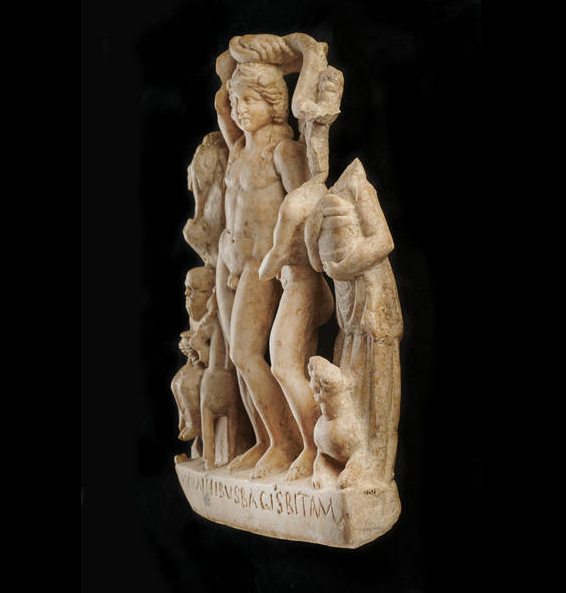
Ancient Coin of the Day: I’ve been remiss in coin threads this week, so let’s get back to it with this base-silver tetradrachm from Alexandria, ca. AD 66-67, one of a series celebrating Nero.
#ACOTD #Nero #Games
Image: RPC 5300/5. Link - rpc.ashmus.ox.ac.uk/coins/1/5300

#ACOTD #Nero #Games
Image: RPC 5300/5. Link - rpc.ashmus.ox.ac.uk/coins/1/5300


This is a great example of Julio-Claudian provincial coinage, part of a series of five base-silver tetradrachms that were issued by Alexandria to celebrate Nero's victories on the 'festival circuit' of Greek games.
The Legend that was universal to the series was ΝΕΡΩ ΚΛΑΥ ΚΑΙΣ ΣΕΒ ΓΕΡ ΑΥ - 'Nero Claudius Caesar Augustus Germanicus' - with the Legend on the Reverse being specific to each set of games, in this case ΠΟΣΕΙΔΩΝ ΙΣΘΜΙΟΣ – ‘Isthmian Poseidon’. 

Other coins in the series commemorated Nero at the Nemean Games (dedicated to Zeus) and the Olympian Games, as on the example below with its Reverse showing ΔΙΟΣ ΟΛΥΜΠΙΟΥ – ‘Olympian Zeus’.
Image: RPC 5927/2. Link – rpc.ashmus.ox.ac.uk/coins/1/5297

Image: RPC 5927/2. Link – rpc.ashmus.ox.ac.uk/coins/1/5297


The Obverse of this issue also shows the LΙΓ issue mark, noting that it was produced in ‘Year 13’ of Nero’s reign. 

Issues also commemorated the games of Pythian and Actian Apollo. Not all of these games were usually held in the same year, with Nero forcing them to hold the Olympics out of sequence (Philostratos, ‘Apollonius’ 5.7.2).
Image: RPC 5302/4. Link – rpc.ashmus.ox.ac.uk/coins/1/5302

Image: RPC 5302/4. Link – rpc.ashmus.ox.ac.uk/coins/1/5302


Striking on all of these issues is the portrait of Nero adorned with a radiate crown, which was typically a marker of divinity, as noted by Lucan (Civil War, 7.458), thus making its appearance here on a living emperor noteworthy.
This could link with an inscription from Athens (Smallwood 145 = IG II/III 3278 = Sherk 78B), which hails Nero as “Imperator Nero Caesar Augustus, new Apollo”, which would suggest that Nero sought to emphasise his connection with this deity.
This connection is also seen on Nero’s coinage from Rome, with Apollo as a lyre-player featuring on the Reverse of this copper-alloy as, ca. AD 62-68.
Image: RIC Nero 79; British Museum (1921,0612.5). Link - numismatics.org/ocre/id/ric.1(…
Image: RIC Nero 79; British Museum (1921,0612.5). Link - numismatics.org/ocre/id/ric.1(…

For more on this connection, see:
Champlin, Edward. “Nero, Apollo, and the Poets.” Phoenix, vol. 57, no. 3/4, Classical Association of Canada, 2003, pp. 276–83
doi.org/10.2307/3648517
#ACOTD #Nero #Games
Champlin, Edward. “Nero, Apollo, and the Poets.” Phoenix, vol. 57, no. 3/4, Classical Association of Canada, 2003, pp. 276–83
doi.org/10.2307/3648517
#ACOTD #Nero #Games
• • •
Missing some Tweet in this thread? You can try to
force a refresh













